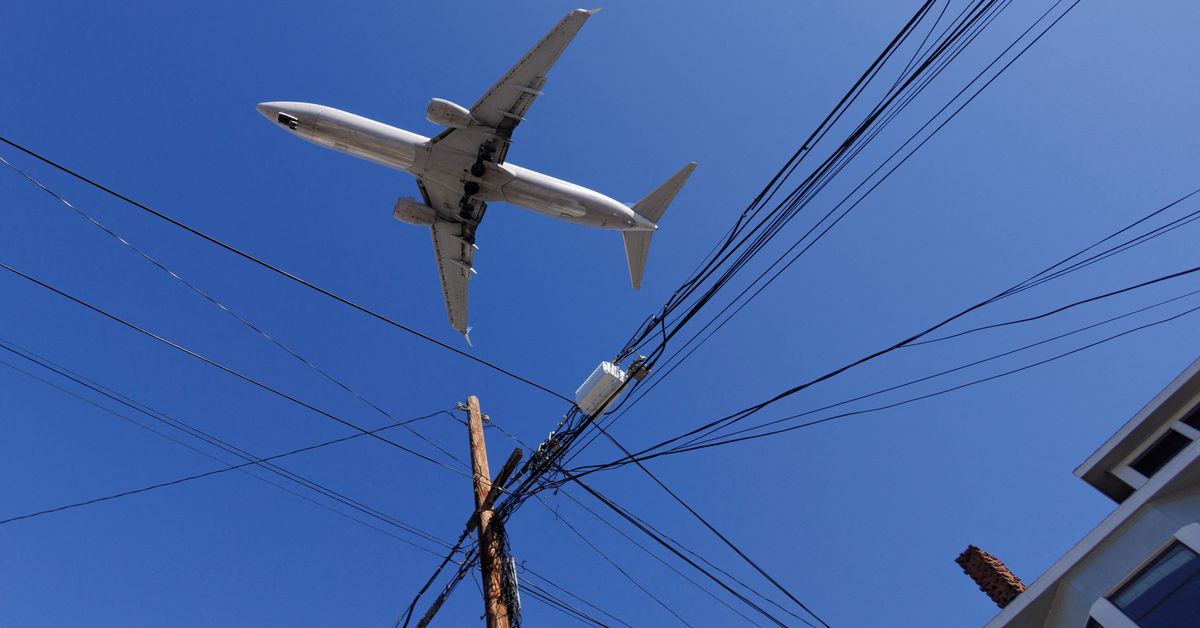A commercial aircraft approaches to land at San Diego International Airport as U.S. telecom companies, airlines and the FAA continue to discuss the potential impact of 5G wireless services on aircraft electronics in San Diego, California, U.S., January 6, 2022. REUTERS/Mike Blake
Register now for FREE unlimited access to Reuters.com
Register
WASHINGTON, Jan 12 (Reuters) – The Federal Aviation Administration (FAA) said it will publish notices early Thursday detailing the extent of the potential impact of new 5G wireless service on sensitive aircraft electronics.
The FAA has been in talks with airplane manufacturers, airlines and wireless carriers to reduce the impact of new wireless service that is set to begin Jan. 19. The FAA has warned that potential interference could impact sensitive airplane instruments like altimeters.
AT&T (T.N) and Verizon Communications (VZ.N), which won nearly all of the C-Band spectrum in an $80-billion auction last year, on Jan. 3 agreed to buffer zones around 50 airports to reduce the risk of interference. They also agreed to delay deployment for two weeks, averting an aviation safety standoff.
Register now for FREE unlimited access to Reuters.com
Register
The FAA said it will publish what are known as Notices to Air Missions at midnight Thursday offering details on “aircraft with untested altimeters or that need retrofitting or replacement will be unable to perform low-visibility landings where 5G is deployed.”
Among the notices will be details of how instrument approaches at major airports are impacted. The FAA has determined that some GPS-guided approaches will continue to be possible at certain airports like Miami and Phoenix.
The FAA said Wednesday that it “expects to provide updates soon about the estimated percentage of commercial aircraft equipped with altimeters that can operate reliably and accurately in the 5G C-Band environment.”
The wireless industry provided additional transmitter location data and the FAA said it was able to determine that in the initial 5G deployment, aircraft will be able to safely land in low-visibility conditions on some runways without restrictions.
The FAA is still “working to determine which radar altimeters will be reliable and accurate with 5G C-Band deployed in the United States.”
On Friday, the FAA picked 50 U.S. airports that will have buffer zones when wireless carriers turn on new 5G C-band service.
Register now for FREE unlimited access to Reuters.com
Register
Reporting by David Shepardson; Editing by Leslie Adler
Our Standards: The Thomson Reuters Trust Principles.
